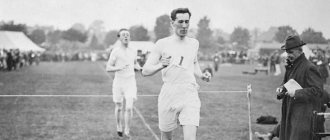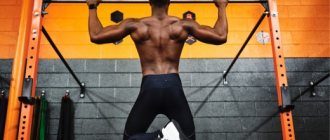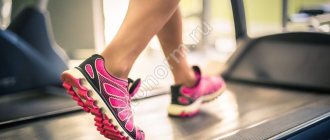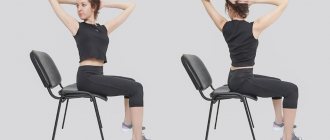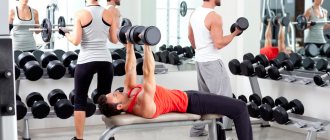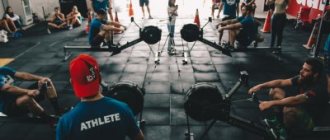Is it possible to compare?
To help you decide which of running and walking is better, which is more effective, we suggest analyzing both types of movement separately, identifying the common features and identifying the differences. Then it will be easier to understand what is needed and why. Go!
Walking
This is our main movement - moving the legs relative to a horizontal surface. You can walk slowly, barely moving your legs, at a speed of 1–2 km per hour. You can go faster; the average speed for walking is considered to be 5–6 kilometers per hour. And you can walk very quickly, up to race walking, the speed of which exceeds 10 kilometers per hour.
By the way, physiological indicators during race walking are similar to the parameters of the body during jogging and even faster running.
We conclude that you can walk in different ways. And each method and speed will have its own effect.
Fast walking is useful for 1 hour a day. Anyone who accumulates a total of 1 hour of walking per day and thinks that he is getting the maximum benefit is a little wrong. When they say that walking an hour a day is beneficial, they mean continuous walking. This is a cardio workout. Remember how you breathe when walking intensively - accelerated. And how your heart behaves – it speeds up. Thus, brisk walking, like running, can provide cardio exercise.
There is such a type as Nordic walking, with sticks in hands. Each step is accompanied by alternate raising and lowering of hands with sticks. This is healthier than regular walking, as the arm muscles are involved in the work. Hand movements make breathing easier, the lungs open more. This means that the body receives better aeration than when walking without poles.
For sporting purposes, it is best to walk in forest areas and parks. In general, it is better to walk where there are no cars, where there is still fresh air. You should not walk where there are strong odors, for example, near poultry and livestock farms. An unpleasant odor can be harmful to your well-being; you need to enjoy the air!
Walking will help you lose weight. To start losing weight, all you need is brisk walking and proper nutrition. Progress will improve, you just need to be patient.
Which of these is healthier?
Now let's decide which is healthier. As I wrote above, running may be contraindicated for some people . If you have any problems with your spine or knees, then I recommend that you run unless a person with a knife is running after you.
Even if you do not have any injuries, regular and incorrect running on unsuitable surfaces and in unsuitable shoes can help you develop contraindications for running.
Walking, in turn, is as safe as possible for health. Except for the case when a man with a knife is running after you, in this case I still recommend using running.
When walking, the load on the spine and knees is minimal , which means it is suitable for everyone. In terms of training the heart muscle, walking can also be very effective if you walk quickly. But you can use other methods for this, for example, a bicycle.
Therefore, from a health and safety perspective, I definitely recommend walking for weight loss.
But if you have:
- everything is fine with the knees and spine, as well as with the respiratory and cardiovascular systems;
- it is possible to run on a rubberized track;
- have money for quality running shoes,
then I recommend you run to lose weight, why not.
Run
Running is also different. You can jog, or you can do sprint races at speeds of up to 30 kilometers per hour. Definitely, running has a good advantage over walking - the possibility of interval training.
No matter how fast a person walks, to further accelerate he starts running. Therefore, you cannot extract the maximum load from walking even for a second. But you can get this from running. You need to run as quickly as possible for at least 20–30 seconds, then slow down and restore your breathing. You can’t stop completely at this moment, jog, slow down as much as possible if necessary, but run.
Jogging in the morning has a much more active effect on the body than a calm walk. The body will not wake up from a walk; on the contrary, it will want to sleep more. After all, walking doesn’t raise your blood pressure or speed up your heart rate so much that you wake up. But if you run, all this will easily change, to the point that you will become out of breath.
And how important running is for losing weight! Therefore, if you compare running and walking and talk about what is better for losing weight, the choice is definitely in favor of running.
What is healthier? Here the answers are very ambiguous, we will analyze this further. But here's what you can say for sure about running:
- Running burns more calories than walking.
- Running definitely expends more energy, makes your heart work faster, and your lungs breathe stronger and deeper.
- It is running that makes us sweat, it trains anaerobic endurance.
Running for weight loss: pros and cons
Running is something that many fat people avoid. Why don't people, especially fat ones, like to run? Because running is hard.
But if it’s hard for you, then you’re doing everything right. I was prompted to these conclusions by VKontakte publics with motivational quotes. But this answer is unlikely to satisfy you, so I’ll tell you more.
To begin with, I want to say that running is an intense cardio workout . Running allows you to increase your heart rate and thereby allow your not yet very athletic body to burn more calories.
The more calories you burn, the less fat you become. But this is provided that you do not replenish all the burned calories by attacking at night, like a real predator, the cakes peacefully resting in the refrigerator.
- The main advantage of running is that you can tell everyone that you run and they will respect you. It’s unlikely that anyone will tell you: “You’re great, I wouldn’t have the willpower for this,” if they say that you just walk in the morning.
- The second advantage of running is that running objectively burns more calories than walking , and also trains your heart, which you wear out with junk food and a sedentary lifestyle.
- The third advantage of running is the ability to escape from problems. Yes, you can also escape from problems, but if you run, then the problems will definitely not catch up with you.
Now about the cons. Let's be honest, not everyone can run more than a hundred meters without covering the rest of the distance in an ambulance. Running is very hard, especially if you are burdened with an extra chin or two, and your stomach would happily stay at home, but unfortunately, it can’t.
The first disadvantage of running is that there is a high probability that your runs will end after a couple of minutes during the first month.
You can, of course, tell everyone that you’re just worried, that you haven’t run for a long time and that this is your first time, but at school you actually ran marathons and could run for days on end. But let's be realistic. This is wrong. Yes, over time you will be able to run longer and faster , but it won’t be right away.
The second disadvantage of running is that not everyone has special stadiums with good running surfaces nearby. If you don't have the right shoes or you're not running on a track that's designed specifically for running, your knees will sooner or later tell you bye-bye.
Running puts a lot of wear and tear on your joints . And the spine will also suffer. Especially if he is not entirely healthy anyway.
What should you choose?
Walking or running? What to choose, what to do?
You are an active person and want to keep your figure in good shape for as long as possible so that you feel great every day. The good news is that running and walking are great for achieving these goals. It all depends on your desire to keep yourself in shape and the characteristics of your health:
- Some people cannot run fast due to diseases of the cardiovascular system. The only option left is jogging or brisk walking.
- You should also not run if you have certain diseases of the musculoskeletal system, injuries to the joints and spine, or pregnancy.
- For those who are too lazy to run or have nothing to do, it is better to take walks. Walk to work if the weather permits. 5 km to work? It doesn’t matter, walking that distance in a day is just right! You can return back by car. Go out into nature on weekends, to parks, and walk in the fresh air. Go skiing in winter. You know that you can ski and you can run. Take advantage of it!
- For those who want to learn a new sport, there is race walking. Try it if interested.
- Have you noticed that grandparents with sticks in their hands have begun to appear in the parks? They walk and, as if on skis, hold Nordic walking poles in their hands. These are older people, everyone has some kind of diagnosis, but they still remain active, extending the years of their lives. Lead by example!
- Are you losing weight? For weight loss, running or walking are the main factors for weight loss. Running, of course, will give results faster. But walking is easier, we walk every day. And we don’t run that often. Therefore, perhaps walking will ultimately be more effective than running. After all, you can stop running. But you won’t give up walking completely. Develop the habit of taking a walk around your neighborhood before going to bed, for a duration of 30–40 minutes. During this time you will cover from 3 to 5 km, depending on your speed.
Walking has virtually no contraindications, but running is more complicated. You can run fast and slow. Jogging is prescribed even for older people, and fast running puts a lot of stress on the body, forcing it to work to the limit. For many people with various diseases, this can be simply harmful or even dangerous.
A diagnosis such as flat feet also interferes with running. But it doesn’t interfere with walking that much, although without special orthopedic insoles it is better to limit the extent of walking. The fact is that constant incorrect load with each step leads to deformation of the ankle, knee and hip joints. As a result, you may notice hallux valgus deformity and chronic inflammation of the joints. Take care of your feet!
What is more effective: running or walking at a brisk pace?
It depends on what result you need to achieve. Do you want to lose weight, train your legs and buttocks, and tone your body? Run.
If you just need a little physical activity to warm up after sedentary work, vigorous walking is enough.
If there are no health restrictions, the effect of running will be greater.
Walking is preferable if running is contraindicated. The two types of exercise can be combined—alternate brisk walking with running during exercise. Changing the load from slow to fast is already interval training, which effectively develops endurance and strengthens the heart muscle. Due to the monotonous load, it is also recommended to combine walking and other sports exercises.
At what age can you start running?
A team of scientists decided to conduct a multi-year study. They selected a group of people who started running after 60 years of age. And they watched them for 10 years. Of course, not everyone reached the finish line of the ten-year race. But those who reached it themselves saw the health benefits of their exercises. The muscle mass of these people increased significantly.
The participants were divided into 3 groups. Those who have been running for about 30 years, those who started running after 50 years, and those who have not been running at all. The three groups were compared on indicators such as percentage of fat and muscle mass, leg muscularity, and bone density.
To the surprise of the scientists, they did not see much difference between the first and second groups. The participants completed the control distances in the same amount of time. More experienced runners had virtually no advantage over beginners. The muscle mass of the legs in the first two groups was 12% higher than that of those who did not run. Both groups also had 17% less fat than their non-athletic opponents.
True, newcomers with ten years of experience lost in such an indicator as bone density. Apparently, to prevent osteoporosis, you should start running as early as possible.
By the way, about fractures caused by a fall while running. There is an opinion that they occur as a result of a fall. But doctors have proven that first the bone suddenly breaks, causing the person to fall.
Let us summarize the results of the comparative study. They showed that there was no significant difference in the form of runners with 30 and 10 years of experience. It turns out that most older people are able to catch up.
It's never too late to start running or race walking
It is worth saying that running has amazing properties. It often happens that a person who starts doing it never gives up and runs five to six times a week. It becomes a habit that you don't want to give up.
So it's never too late to start running or walking to become more energetic and healthier.
Although, alas, there are people for whom running is contraindicated.
Who is better off walking than running?
- untrained people over 35 years old;
- people with orthopedic problems and spinal diseases;
- for joint pain while running;
- people who have had a stroke or heart attack;
- people with a body mass index (BMI) over 30. BMI is a value that allows you to assess the correspondence between body weight and height. It is calculated by the formula: weight divided by the square of height in meters (that is, with a height of 170 and a weight of 75 kg, BMI = 75: (1.7x1.7).
- patients with diabetes;
- smokers with a smoking history of more than a year.
Preparation for classes
Ideally, you should have your heart checked before you start running. Go through the so-called functional tests, when the capabilities of the cardiovascular system are determined under a certain load. And have no contraindications due to the condition of the musculoskeletal system, hip and knee joints. And then – regular classes with a gradual increase in load. The older the person, the less intensity of exercise should be with a moderate increase in their duration. It is better to run slower, but longer.
Load tests
Don't like or can't run? Go ahead. Just walk fast. There is little benefit from walking slowly. My Omron pedometer only counts steps of a certain intensity. Normally, you need to walk 10,000 steps a day. The faster you walk, the fewer steps you need to take. If you want to know if you're getting enough exercise in a day, you can buy one. The model that I have now is most similar to the Omron HJA-300.
How to breathe during exercise
Breathing, both during race walking and when running, should ideally follow the pattern: “short inhalation - short inhalation - short exhalation - short exhalation.” Inhale through your nose, exhale through your mouth. You cannot talk while running or walking. Talking will take your breath away and, as a result, will put additional stress on your heart and blood vessels.
Pulse during exercise
It is best to train in the so-called. aerobic zone, when your pulse is 70-80% of the maximum allowable heart rate (heart rate), which is calculated by the formula (220 - your age). Only under this condition will the cardiovascular and respiratory systems be effectively trained and strengthened. This is the optimal zone for endurance training.
The development of a network of small capillaries in the muscles is stimulated, which allows oxygen to be delivered more efficiently. The number and size of blood vessels increases, the volume of the lungs increases, the functional state of the respiratory system improves, and the size and strength of the heart increases. The result is a gradual decrease in heart rate at rest. Training in this zone increases the efficiency of blood circulation in the heart and skeletal muscles.
Exercise bikes, bike paths, steppers, and elliptical trainers in fitness clubs usually have heart rate monitors. To monitor your heart rate while exercising outdoors, you can purchase a fitness bracelet or heart rate monitor with a chest strap. The latter measures the pulse most accurately. There are models that you can swim with.
Running with heart rate monitor with chest strap
Precautionary measures
If you are running and you have enough nasal breathing (inhale air only through your nose and exhale through your mouth), then everything is fine. As soon as you want to gasp for air, reduce your speed.
It is important to take into account not only the state of the cardiovascular system, but also pay attention to how his biological clock works, whether he is a “lark” or a “night owl”. It’s easy for a “lark” who goes to bed early and gets up early to start running at both six and five in the morning. It’s a completely different picture when an “owl” runs out so early. It is better for owls to run when the body finally wakes up, because you need to do it with pleasure, in a joyful mood.
You can often see: one runs with pleasure, the other - as if serving his duty. There is a point of view that it is better to start intense physical activity, especially for people who are not very young and not very trained, after 12 days. So to speak, when the body finally wakes up and warms up.
Avoid eating 1.5-2 hours before running. This way you will reduce the likelihood of side pain and the workout will be easier and more effective.
Be sure to do a warm-up to warm up your muscles and get your blood flowing. To do this, walk at a fast pace to get your heart rate up. Perform swinging movements with your arms and legs, rotational movements of your torso, and squat several times.
Larks and owls
When running, your feet should be placed gently, without sharp impacts on the heels. Take care of your joints.
Running Knee and Ankle Injuries: Prevention and Treatment
After finishing your run, do not stop abruptly. Take a step and walk until your pulse returns.
How to walk and how to run
We won’t look at different training goals this time, let’s just say that there are many of them. Let’s just give an example of how to walk and run just to be healthy and keep your body in good shape:
- You need to walk every day, trying to continuously walk at an average or fast pace for at least 30–40 minutes. Ideally, this is done outdoors (for example, an evening walk in the park).
- You can run every day, or 2-3 times a week in the morning for 15-20 minutes. If you want, you can interval.
Differences between running and walking
In order to understand which exercise is more effective in a particular case, you need to know the differences.
In order to better strengthen muscles, running is, of course, preferable
The main points that make up the fundamental difference between running and walking include the following:
- walking involves the muscle group of the lower leg, while running involves the bundles of the shoulders, chest, thigh muscles, as well as the gluteus maximus, medius and minimus muscles;
- while running, for a split second a person is in a state of flight; this phase is completely absent when walking. Constant jumping leads to severe stress on the cartilage tissue underlying the intervertebral discs and joints;
- the heart rate while walking is much lower, due to which there is rarely a feeling of coldness behind the sternum, and a person can exercise longer;
- running for more than fifteen minutes uses all the sugar freely circulating in the bloodstream, active fat burning processes are launched;
- walking has less impact on chronic stress, since only while running, due to the high load, a person is distracted from his thoughts and can relax mentally;
- when choosing running, you need to monitor your own heart rate so that it does not exceed one hundred and forty beats per minute, since it is the range from 120 to 140 beats that allows you to burn fat tissue as efficiently and quickly as possible.
